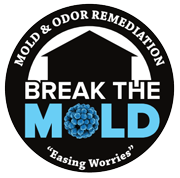Don’t Let Mold Allergies Dampen Your Summer Vacation!
 Picture this: School is out, work hours have relaxed and it’s time to pick up for vacation. You—and maybe your family or friends—pile into the car, chasing the long daylight hours and relaxation. Maybe you head to the shore to sink your toes into the sand, body surf and spend evenings with a bonfire. Or, perhaps the lake is more your style. The mountains calling, you follow the lure to cooler temperatures, panoramic views and refreshing days paddling on the water.
Picture this: School is out, work hours have relaxed and it’s time to pick up for vacation. You—and maybe your family or friends—pile into the car, chasing the long daylight hours and relaxation. Maybe you head to the shore to sink your toes into the sand, body surf and spend evenings with a bonfire. Or, perhaps the lake is more your style. The mountains calling, you follow the lure to cooler temperatures, panoramic views and refreshing days paddling on the water.
That first day is glorious, but after a night in your picturesque lake house or shore home, bouts of congestion, headaches, sneezing, and feelings of itchy eyes, nose and/or throat set in. If that sounds familiar, it’s likely you have a mold allergy.
While symptoms, which also include runny or stuffy nose, postnasal drip, watery eyes, and dry skin, mimic the common cold and are often mistaken for it, if you’re on vacation, it could be a mold allergy.
Mold commonly grows in the places we most associate with fun, like beach houses, lake houses, and hotels in those areas, thanks to a warm, moist environment which allows mold to flourish.
While mold allergies are common in vacation spots, that shouldn’t stop you from going away. Take precautions when traveling, like picking hotels or rental homes that are newer, traveling with a small dehumidifier and properly caring for items like towels and swimsuits.
First and foremost, be sure to book a room away from an indoor pool—they’re a magnet for mold spores. If your room has a musty odor, the mold is probably present. Pack a dehumidifier, if you can, to lessen the feeling of dampness in the space. Inspect the bathroom for mold and mildew in the tiles and grout and the air conditioning filters.
Most importantly, plan ahead to see an allergist. If you or a loved one commonly experience symptoms on vacation, see a board-certified allergist at Allergy & Asthma Specialists ahead of your next trip. An allergist can help identify allergies by skin testing, a simple in-office procedure in which an allergist will apply a small amount of different fungi extracts to the patients’ skin. If the patient has a reaction, the allergist can confirm the specific allergens.
After skin testing, an allergist can determine an appropriate treatment plan. This may mean making lifestyle changes or taking prescription medicine to reduce the allergic reaction. Immunotherapy, including sublingual drops—custom formulated drops that help alter the body’s reaction to an allergen—are a great choice for their long-term effectiveness.
An allergist can also make recommendations for keeping your home, and other environments like vacation homes or hotels, clear of mold. By doing so, you can get back to enjoying the stretches of pristine white sands, salty air and glinting water without the worry.

